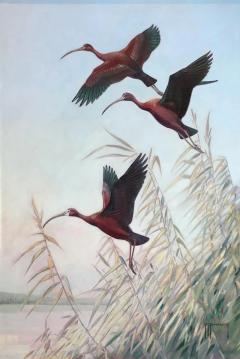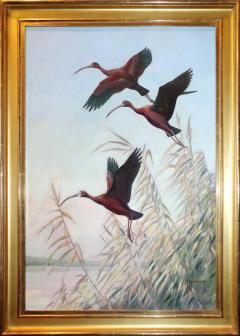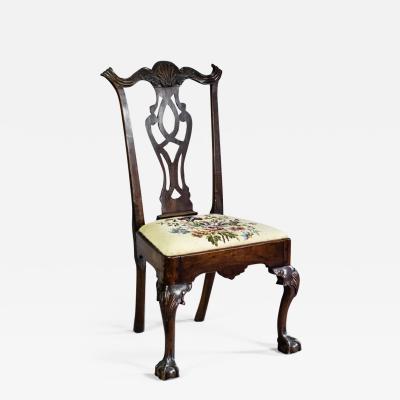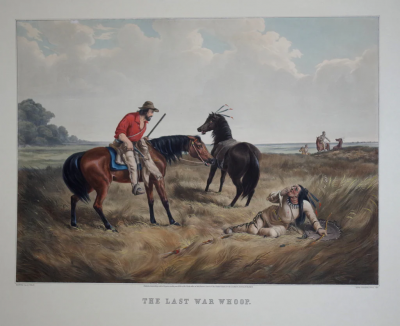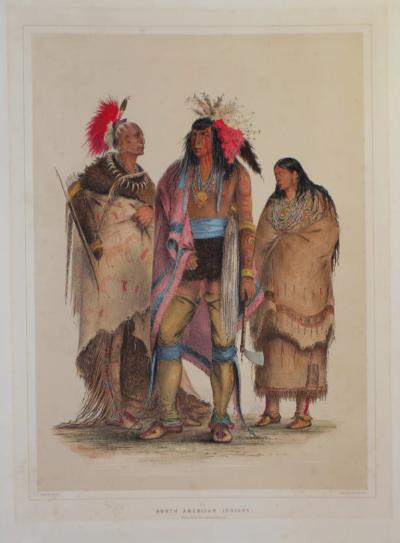ROGER TORY PETERSON (1908-1996), GLOSSY AND WHITE-FACED GLOSSY IBIS
-
Description
Glossy and White-faced Glossy Ibis
Oil on canvas
Artist’s monogram signature l.r.: RTPETERSON
Canvas size: 28” x 19”
Framed size: 32 1/4” x 23”
This is a superb painting of Glossy and White-faced Glossy Ibises produced by gifted artist and founder of the modern field guide, Roger Tory Peterson (1908-1996). In this work, each of the birds' physical features is carefully and crisply delineated, and all of the creatures are depicted whilst situated in their true natural environment, the marshy wetlands of the southern United States. Yet in spite of the impeccable scientific accuracy Peterson displays in this painting, an image which doubly served as the basis of an illustration in Alexander Sprunt's Beautiful Birds of Southern Audubon Societies, this composition is also a work of great artistry. In this intelligently organized composition, a trio of birds glides through an exquisitely tinted blue sky above and past a gently rustling sweep of multi-colored marsh reeds. In this work Peterson no doubt proves that he was a modern master of the art of ornithological illustration.
Peterson was an internationally renowned ornithologist, naturalist, author, lecturer and artist. Nevertheless, out of all of these labels he first and foremost identified himself as an artist. Born in Jameston, New York, Peterson spent his youth sketching and observing birds in nearby rivers and fields, and reading books about the titans of ornithological illustration like Durer, Lear, Audubon and Fuertes. As he grew into adulthood, Peterson studied at the Art Students League and National Academy of Design, both in New York. After college, Peterson moved to Massachusetts in order to teach science and art. It was there that he developed his extremely influential system for identifying birds in the field. Peterson's system ultimately inspired him to publish his first Field Guide to the Birds in 1934. In spite of a severe economic depression, Peterson's Guide sold out in one week. His book would subsequently be re-released in 4 more editions.
Peterson is rightly credited as one of the founding inspirations of the twentieth-century environmental movement, having tirelessly traveled the world to lecture on, observe, and record obscure and exotic species of birds. He also served as a vital member of the administrative staff of the National Audubon Society, managing the organization’s educational programs and serving as the art editor of its magazine. Peterson also served as art director of the National Wildlife Federation for over three decades, and made environmental films in America, Europe, Africa, the Galapagos Islands, and Antarctica and the Artic.
Peterson's works are part of the permanent exhibit at the Leigh Yawkey Woodson Art Museum in Wasau, Wisconsin, and have also been exhibited at the Smithsonian Institution. Peterson has received every major American award for natural science, ornithology, and conservation. He has also been the recipient of numerous honorary medals, diplomas, and citations, including the U.S. Presidential Medal of Freedom and the Order of the Golden Ark of the Netherlands. Peterson died at his home in Old Lyme, Connecticut in 1996.
Glossy and White-faced Glossy Ibises are found throughout the southern United States and tropical America. They are a group of long-legged wading birds in the family Threskiornithidae. Every Ibis, regardless of species, has a long down-curved bill and will probe mud for its food. As is demonstrated in this work, the Ibis's flight is lofty and strong. Unlike herons Ibis flocks fly in lines with necks outstretched. In ancient Egyptian folklore, the Sacred Ibis, associated with the god Thoth, is an object of great religious veneration. Priests ritually invested Ibises with sacerdotal honors before embalming and consecrating them into tombs. Scholars now believe that Ibises owed their sacred character to the fact that the bird would always appear prior to the rising of the Nile, an annual phenomenon on which the country's prosperity depended. -
More Information
Documentation: Documented elsewhere (similar item) Period: 1900-1919 Styles / Movements: Other Incollect Reference #: 589034 -
Dimensions
W. 19 in; H. 28 in; W. 48.26 cm; H. 71.12 cm;
Message from Seller:
Founded in 1971, Arader Galleries is the world's leading dealer and auction house of Rare Maps, Prints, Rare Books and Watercolors of the 16th through 19th centuries. Over our forty-five year history we have grown to five magnificent locations in some of America’s most vibrant cities and are represented at the most distinguished antiques shows in the country. We are proud to buy and sell more original Audubon prints that any other firm in the United States.
















